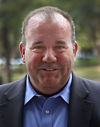 |
| Rich Young |
It's been a busy fall for Verizon's director of media relations, Rich Young. "I haven't been in the office for the last two weeks," he tells PR News. Young, who will be speaking about Verizon's content strategy at PR News’ Nov. 30 Media Relations Conference in Washington, D.C., hasn't been leaf-peeping—he's been managing communications for Verizon in the aftermath of Hurricane Sandy.
Young took time out to discuss Verizon's use of content as a communications tool and how the telecommunications giant handled media relationships following Sandy.
PR News: How does content creation mesh with a media relations strategy?
Richard Young: Content creation is at the core of Verizon’s media relations strategy. As a one-time dominant telephone service provider, our main focus was to use media to answer reporter inquiries on service outages and maybe why we need an annual rate increase. Now, in our industry, the world has changed, and so has the role of our media and PR teams.
As we just saw with Hurricane Sandy, while we still have a significant team that’s dedicated to responding to outages and service disruptions, the reality is that we have an even bigger team focused on promoting our products and brand. Our major business units are using traditional news releases as a tool of last resort. In its place are blogs, videos, podcasts, social media and proactive storytelling—not just to reporters, but to bloggers and many other influencers.
PR News: What are Verizon's goals with content creation?
Young: To offer a broad narrative that truly tells a story. We look at each product, service or initiative as an opportunity for us to be part of the dialogue. We want our current and potential customers to know when it comes to phones, applications, broadband and associated technologies, we are part of the solution.
During and after the storm our business put major assets into the restoration efforts, and [we produced] one daily news release. Individually, we took our initiatives and aggressively told our story—to consumers, customers, legislators, local officials and regulators.
PR News: What are the common content needs of influencers and journalists?
Young: In many ways we look at journalists as part of the influencers that we target every day. As a former reporter, I was always skeptical of many of the traditional PR pitches I got every day. We should look for and engage content as something that’s used every day in the marketplace.
We need to move beyond a traditional announcement that Verizon is offering a new product or service. We need to tell our key influencers why that new product, application or service is something you’ll want to use.
PR News: Which forms of content will have the biggest role in 2013 for media relations, and how should they be blended into the modern press release?
Young: For Verizon, the modern press release will likely start out as a blog. We will continue to do traditional news releases for issues including earnings, acquisitions, major product or personal announcements. Next year, however, we’ll be making most of our announcements using blogs—blogs incorporated with videos, photos, podcasts, social media and related content. The modern press release is not so much a news release, but a multifaceted, multi-tool narrative that tells a story, rather than a statement that makes a traditional announcement.
PR News: What’s one concept/idea you want to share with Media Relations Conference attendees?
Young: We are entering a new world where influencers are playing an ever-increasing role in what we do. We cannot, however, forget about the power and influence that traditional media has. In my experiences with both the storm and our labor relations/strike, major/traditional media still lead the way. Influencers play a key role in following up, but the New York Times and the Wall Street Journal can often set the tone on a particular issue.
To learn more from communications pros like Rich Young, register to attend PR News’ Nov. 30 Media Relations Conference in Washington, D.C.
